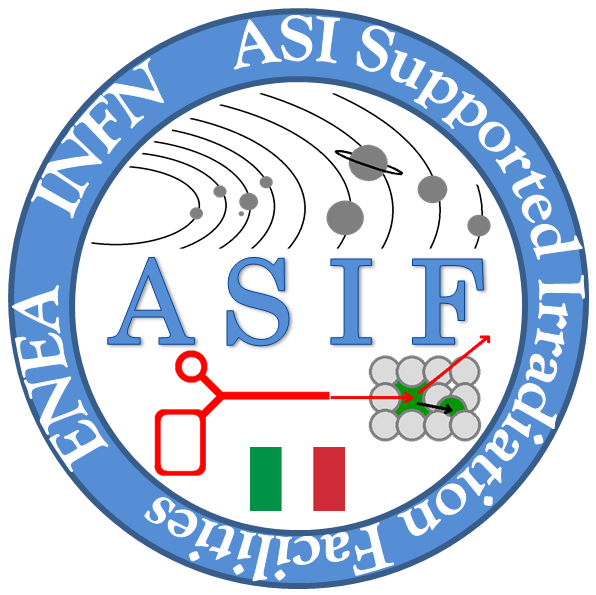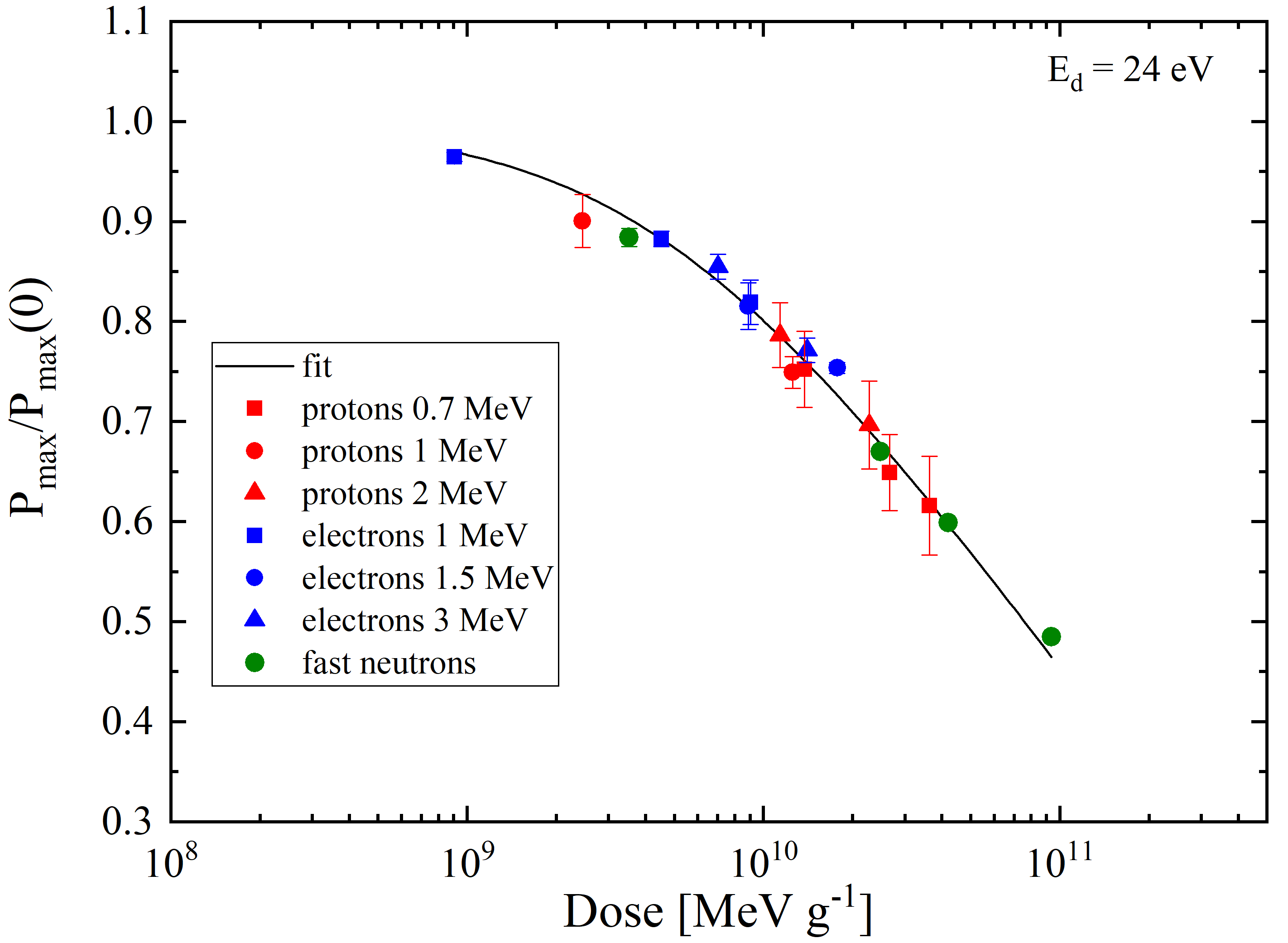Methodology developed by INFN Milano-Bicocca and tested at TRIGA Mark II reactor in Pavia:
- neutron activation of samples made of various elements and γ-spectroscopy of activated samples to measure the activation rates (Ri) of many reactions [Borio di Tigliole et al. (2014)];
- unfolding of neutron flux spectrum using experimental data of activation rates and corresponding cross sections [Chiesa et al. (2019), Chiesa et al. (2018), Chiesa et al. (2014)].
- spatial characterization of neutron flux with Al-Co activation monitors [Chiesa et al. (2019), Chiesa et al. (2015)]

Uncertainties:
- ~2% for total flux intensity;
- ≤10% in specific energy bins of neutron spectrum
Measurements at TRIGA Enea Casaccia
Same methodology developed for TRIGA PV, with some improvements due to high accuracy requirements on flux spectrum measurements.
Solar cells and diodes irradiated together with monitor samples to get few percent accuracy on neutron fluence.
Methodology for neutron flux measurement
Irradiation of samples containing different elements, to measure the neutron activation rate (R) of many reactions characterized by different cross sections.

Activation rate is defined as:

Neutron flux spectrum Φ(E) is unfolded combining the activation rate and the cross section data of various reactions which are induced with different proportions by neutrons with different energies.
The activation rate is determined by measuring the activity of neutron-activated isotopes. The activity after irradiation is defines as:

where λ is the decay constant and tirr is the irradiation time.
Activity is measured through γ-spectroscopy with HPGe detectors as follows:
- Fit of peaks in experimental spectra to get the counting rate (C ) of each γ-line.
- MC simulation of γ-spectroscopy measurements to get the efficiency (ε) for each γ-line.
These enables one to evaluate the absolute activity A = C / ε
MC simulation requires the characterization of efficiency with calibrated γ-sources to optimize and validate the MC (GEANT4) simulation model of HPGe detector.

References
[Borio di Tigliole et al. (2014)] A. Borio di Tigliole, A. Cammi, D. Chiesa, M. Clemenza, S. Manera, M. Nastasi, et al., TRIGA reactor absolute neutron flux measurement using activated isotopes., Progress in Nuclear Energy, vol. 70, pp. 249 – 255, 2014. DOI: 10.1016/j.pnucene.2013.10.001
[Chiesa et al. (2018)] D. Chiesa, M. Nastasi, C. Cazzaniga, M. Rebai, L. Arcidiacono, et al., Measurement of the neutron flux at spallation sources using multi-foil activation. Nuclear instruments and methods in physics research. Section A, Accelerators, spectrometers, detectors and associated equipment, vol. 902, pp. 14 – 24, 2018. DOI: 10.1016/j.nima.2018.06.016
[Chiesa et al. (2019)] D. Chiesa, M. Carta, V. Fabrizio, L. Falconi, A. Grossi, M. Nastasi, M. Palomba, S. Pozzi, E. Previtali, P. G. Rancoita, B. Ranghetti, M. Tacconi, Characterization of TRIGA RC-1 neutron irradiation facilities for radiation damage testing, available at https://arxiv.org/abs/1911.09374
[Chiesa et al. (2014)] D. Chiesa, E. Previtali, and M. Sisti. Bayesian statistics applied to neutron activation data for reactor flux spectrum analysis., Annals of Nuclear Energy, vol. 70, pp. 157 – 168, 2014. DOI: 10.1016/j.anucene.2014.02.012
[Chiesa et al. (2015)] D. Chiesa, M. Clemenza, M. Nastasi, S. Pozzi, E. Previtali, et al., Measurement and simulation of the neutron flux distribution in the TRIGA Mark II reactor core., Annals of Nuclear Energy, vol. 85, pp. 925 – 936, 2015. DOI: 10.1016/j.anucene.2015.07.011

